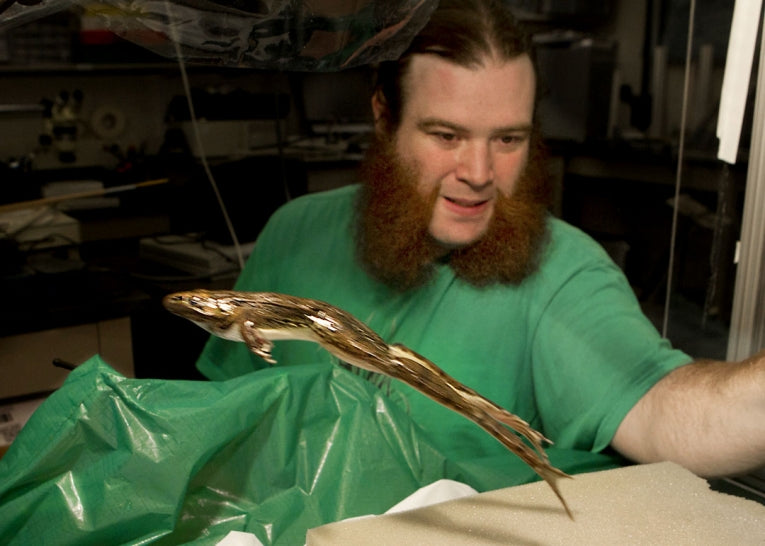Although traditionally tendons were seen as simple connective tissue, linking muscle and bone, it has been known for some time that they play an important role in the transfer of kinetic energy with a spring-like elasticity.
It is this comparison to a spring which helps to explain the surprising prowess that frogs show when leaping. A jump requires strong muscles to propel an animal's body against the pull of gravity and muscle power alone would not explain the speed and distance that frogs are able to achieve. This puzzle was the motivation behind a recent study by researchers from Brown University.
One of the team, Henry Astley commented that it would be necessary to have some form of elastic structure to see the performance that many frogs demonstrate. Some frogs jump up to 20 times their own length, with recorded jumps of up to 2.2 metres.
The team set up a high speed x-ray camera that was able to capture the jump of a frog at a speed of 500 images per second. To make the motion of the leg clearer, metal inserts were implanted into the bones and muscles of a frog. Analysing the images carefully, they could identify individual muscle, bone and tendon movement.
The film showed a complex process that involved the muscles in the leg loading force onto the tendon in the ankle of the frog, leaving it ready to return in a manner that could be compared to a spring. As a frog jumps, the muscles drive the animal upwards and forwards, and at the same instant the tendon is extending the joint in the ankle and boosting the energy released.
Enthusiastic about the success of their study, the team were keen to point out that the study is not only applicable to frogs. They expressed their confidence that this will provide insight into the role of tendons in other animal movement.
A sample from the video is available:










